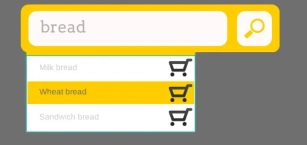- ProductsSearch and BrowseRecommendations
- Solutions
- Integrations


Handling the product feeds is one of the most overwhelming aspects of an online business. Given the sheer number of options, it only gets more challenging when you have to find the perfect feed management software that suits your business. In this article, we will discuss some of the broad factors you must consider before going any further.
1. Vendor Credibility
As a responsible online business owner, you must never accept anything at its face value and always run a background check on whoever you’re dealing with. It’s the same when it comes to choosing your vendor for product feed management software. Go on to see if they are widely recognized for their services in the market (read: if they are popular among your competitors). Look at how long they have been in the industry and what their other clients say about them. This is imperative because their software will access some of your highly sensitive data.
2. Innovation
You will be setting up a massive barrier to your business growth if you go with a service provider that’s not innovative enough. Check if they leverage machine learning and AI to adapt to the feed to changing customer bases. Plus, ask whether they are experimenting with the latest, cutting-edge technologies to implement in their product. Are they closely in touch with industry leaders like Google and Facebook to adapt and build new functionalities and improve the performance of their products further?
3. Security of your data
Data security is always a significant consideration when you use services from another company. Hence, while hunting for the perfect feed management software, always ask whether the service provider is leveraging multi-factor authentication and implements other best practices to prevent data breaches. It’s also highly recommended to segment your data based on departments using it, so even if a few segments are compromised, you can take action to protect the rest of your data.
4. Data optimization
Feed management tools today offer functionalities to utilize the potential of your data maximally. For instance, the tool should organize fragmented information and clean it once it gains access. Competent service providers also use AI to improve the tool’s decision-making abilities through historical data and projected trends. The same technology is being used to suggest price points for optimized sales.
5. Import sources
Most online business owners deal with a range of data sources. Given that, you must only settle for a service provider whose solution can integrate with all these sources. Going further, make a note to ask whether the tool has several API integrations already set up. These integrations will ensure you can import data from your PIM system, Google Shopping, etc. Also, check what other functionalities (say, robust web crawlers) the tool offers.
6. Export platforms
Most feed management software applications are designed to serve limited export platforms like Amazon, eBay, or Google Shopping (for ecommerce). Given that, you must ensure that the platforms you sell on are supported by the tool you are finalizing. As a best practice, shortlist the applications that provide an omnichannel experience.
7. Speed
High latency is one of the leading factors that prompt online businesses to look for alternative methods to manage their product data feeds. First, you must ask whether the application you have shortlisted will help you save time. Factors such as the level of data processing, the time taken to process all the data, and whether the application supports delta uploads will help you decide.
8. Scalability
Most feed management software apps can’t keep up with the pace at which online businesses are growing. Thus, while choosing the tool, ensure the solution can scale if you venture into new markets. Similarly, if you expand internationally somewhere down the line and end up dealing in thousands of products, you shouldn’t have to switch vendors to entertain new advertising opportunities.
9. Usability
A software application is no good if the learning curve it offers is too steep. Interfaces of some software applications are better than others, so when you look for a feed management software tool, ensure it’s user-friendly and natural in design. A competent feed management software solution should manage even the most complex feed structures. To establish that, never leave without asking for a demo. Can it analyze the health of your feed? If there are errors, do you need to rely on extensive coding knowledge to deal with them?
10. Customer support
Different vendors out there offer after-sales support to different degrees. You can go all the way from paying for the service you request to getting a dedicated integration manager at no extra cost. Ask whether they offer 24/7 support, and if not, whether their support timing suits your business requirements to a comfortable extent. Moreover, also look for reviews for their customer service and if their other customers are satisfied.
11. Value for money
All the points mentioned above have equal weightage in deciding whether or not a given feed management solution is worth your investment. Say, for instance, you are only starting out and have limited requirements; you might want to settle for a more economical option, but keep in mind that this will hinder your progress and limit the room for further growth. And if you go premium, go out of your way to ensure that you are indeed getting services for the money you paid.
The core idea behind a feed management software solution is to drive sales exponentially and consistently. Taking the above 11 factors into account, you can find the best solution for your business.
With more than 200m unique shoppers and 25b searches every month, there’s a reason why Unbxd’s feed management solution is turning heads. It powers over 1300 commerce websites across 40+ countries using low-code offerings through plug-and-play APIs and SDKs. It’s reliable, SOC II compliant, and delivers <65ms response time. And if that wasn’t enough, using it, businesses have been known to witness a 40% growth in revenue per session.
So, what are you waiting for? Book a demo now!


